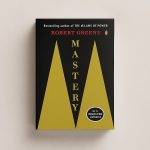The Power of Habit: Why We Do What We Do in Life and Business by Charles Duhigg explores the science behind why we do what we do in life and business. Drawing on neuroscience, psychology, and real-world case studies, The Power of Habit by Charles Duhigg reveals how habits emerge, why they persist, and most importantly how they can change. At the core is the “habit loop” of cue, routine, and reward, a pattern shaping more than 40% of our daily actions. Through compelling stories from individuals transforming their lives to companies like Starbucks and Target leveraging habit science he shows how small, intentional shifts in routines can spark profound personal, organizational, and societal transformation. Habits, Duhigg argues, are our unseen destinies.
1. Introduction to The Power of Habit by Charles Duhigg
Published in 2012, The Power of Habit quickly became a touchstone for readers seeking to understand why humans do what they do and, crucially, how those patterns can be changed. Drawing on neuroscience, psychology, social science, and business case studies, Pulitzer Prize–winning journalist Charles Duhigg distills decades of research into a narrative that is equal parts engaging storytelling and actionable framework.
The central thesis is deceptively simple: Habits-automatic behaviors triggered by cues and reinforced by rewards-shape a vast portion of our daily life. They determine how we eat, sleep, work, interact, spend money, and pursue goals. Importantly, they are not fate. Habits can be diagnosed, understood, and transformed once we grasp their underlying mechanics.
Duhigg organizes the book into three parts:
- The Habits of Individuals – exploring the habit loop, the craving brain, and the “golden rule” of habit change.
- The Habits of Successful Organizations – analyzing how keystone habits can transform companies, how willpower can be institutionalized, and how crises can catalyze new organizational norms.
- The Habits of Societies – showing how collective habits create and shift mass movements, and probing the ethical implications of habit science.
The narrative blends memorable characters like Lisa Allen-who remade her life by changing one keystone habit-with case studies from corporate giants like Starbucks and Target, and sociopolitical milestones like the Montgomery Bus Boycott. In doing so, Duhigg bridges personal development with organizational and societal transformation.
2. Author Biography: Charles Duhigg
Charles Duhigg is an American journalist and non-fiction author celebrated for his skill in distilling complex scientific ideas into accessible and compelling narratives.
– Early Life & Education: Born in New Mexico, Duhigg attended Yale University and later earned an M.B.A. from Harvard Business School.
– Career Highlights:
– Worked as a reporter for The New York Times, winning the Pulitzer Prize in 2013 for explanatory reporting related to Apple’s manufacturing practices in China.
– Known for investigative journalism on business, productivity, and behavioral science.
– Other Works: Authored the 2016 book Smarter Faster Better, focused on the science of productivity.
– Relevance to The Power of Habit: Duhigg’s background in investigative reporting shapes the book’s structure-each argument is framed through a vivid case study, supported by research, and illustrated through accessible analogies.
3. Core Concept: What is a Habit?
A habit is an automatic behavior acquired through repetition, typically triggered by a specific cue, performed in response to that cue, and rewarded in a way that reinforces the behavior.
Duhigg cites research (including a 2006 Duke University study) indicating that more than 40% of the actions we perform each day are not actual decisions but habits. These patterns reduce cognitive load, allowing us to conserve energy for novel problems-but they also lock us into cycles that can be either constructive or destructive.
4. The Habit Loop
The habit loop is the neurological pattern at the heart of every habit:
- Cue – A trigger that tells your brain to go into automatic mode.
- Routine – The behavior itself, which can be physical, mental, or emotional.
- Reward – The positive reinforcement that tells your brain the behavior is worth remembering.
Why this matters: Habits cannot be eradicated simply by willpower; instead, they must be replaced. The key is identifying the cue and reward, then inserting a new routine.
Example: Eugene Pauly (E.P.) – A man who lost the ability to form new memories after viral encephalitis, yet could still learn new daily routes and routines unconsciously. His case illustrates how habits live in the basal ganglia, a part of the brain distinct from memory systems.
5. Part One – The Habits of Individuals
Chapter 1: The Habit Loop
– Habits emerge because the brain seeks to conserve effort.
– Once a habit loop is formed, the brain stops fully participating in decision-making for that behavior unless deliberately engaged.
Chapter 2: The Craving Brain
– The role of craving in habit formation.
– Case Study: Claude Hopkins’ Pepsodent advertising campaign made toothbrushing a widespread habit by associating it with a sensory “cue” (the tingling sensation).
Chapter 3: The Golden Rule of Habit Change
– Habits can’t be destroyed, but can be transformed by keeping the same cue and reward while changing the routine.
– Example: Alcoholics Anonymous replaces destructive drinking routines with social support and introspection while keeping similar cues and rewards.
6. Part Two – The Habits of Successful Organizations
Chapter 4: Keystone Habits
– Keystone habits create a ripple effect, changing other habits unintentionally.
– Example: Paul O’Neill at Alcoa focused on worker safety, catalyzing improvements in communication, efficiency, and profits.
Chapter 5: Willpower Becomes Automatic
– Willpower is like a muscle-it can be strengthened through practice and depleted with overuse.
– Example: Starbucks trains employees to develop willpower habitually through scenario practice.
Chapter 6: The Power of a Crisis
– Crises can dismantle old habits and create openings for new ones.
– Example: Rhode Island Hospital restructured its operational habits after a fatal surgical error.
Chapter 7: When Companies Predict (and Manipulate) Habits
– Big data allows companies like Target to anticipate customer needs-and influence purchasing habits-sometimes before customers themselves are aware (e.g., predicting pregnancies from shopping data).
7. Part Three – The Habits of Societies
Chapter 8: How Movements Happen
– Social habits, strong and weak ties, and peer pressure fuel large movements.
– Example: Civil rights movement’s success in Montgomery leveraged existing community habits and relationships.
Chapter 9: The Neurology of Free Will
– Raises questions about responsibility when actions are driven by ingrained habits.
– Case: A compulsive gambler argues her actions were driven by neurological compulsions.
8. Main Ideas and Theoretical Contributions
- Habits Have a Neurological Structure:
– The habit loop is a self-reinforcing system.
- Craving Powers Repetition:
– Without craving a reward, a habit rarely sticks.
- Keystone Habits Transform Systems:
– Small, pivotal habits can ripple out to change entire lives or organizations.
- Social Patterns Matter:
– Community habits can amplify change far beyond individual efforts.
- Ethics of Manipulating Habits:
– The same tools that help people can be used to manipulate them.
9. Practical Applications
– For Individuals:
– Diagnose the habit loop (identify cue, routine, reward).
– Substitute the routine while keeping cue and reward constant.
– Build willpower through small, manageable changes.
– For Organizations:
– Locate and cultivate keystone habits.
– Use crises to reset and improve core processes.
– For Society:
– Recognize the power of collective habits in shaping norms.
10. Reception and Legacy
– Critical Reception: Widely praised for accessible storytelling and practical frameworks.
– Impact: Influenced corporate training programs, self-help methodologies, and marketing strategies.
– Criticism: Some argue habit change is more complex than the book implies, especially for deeply ingrained patterns tied to mental health disorders.
11. Conclusion
The Power of Habit presents a persuasive argument: By understanding the habit loop and focusing on key leverage points-like keystone habits and craving-you can reshape your life, influence organizations, and even shift societies. The book’s examples demonstrate that, while changing habits is not easy, it is possible with deliberate practice and structural support.
The ultimate takeaway? You can’t erase old habits, but you can rebuild them. And once you do, the compounded effect can be transformative.
If you found this summary helpful, please share it or leave a comment below.













